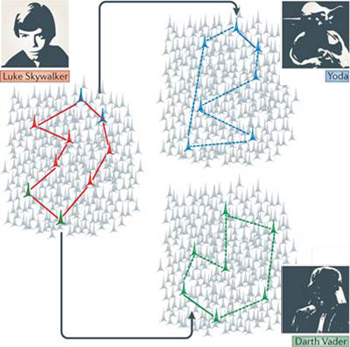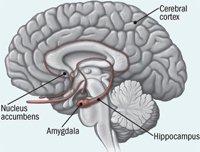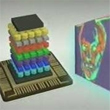Wednesday, 10 October 2018
The Neuronal Traces of Our Conceptual Memories

Much has been written on the question of how our memories are physically represented in our brains. In this post, I discuss two answers that have been competing with each other, so to speak, for a number of years. In very general terms, according to one of these answers, our memories are distributed across vast populations of neurons, numbering in the millions (out of the roughly 16 billion neurons in the cortex as a whole). According to the other answer, these memories are instead recorded in much smaller, sparser populations of neurons, in particular in the hippocampus, which is a very old part of the cortex in evolutionary terms and is highly involved in memory.
In recent years, the latter, “sparse” conception of memory, in which at most a few thousand neurons are activated by any given memory, seems to be gaining the upper hand, or at least that is what I gather from two recent articles touting its merits. (more…)
Memory and the Brain | No comments
Sunday, 25 September 2016
How Different Parts of the Brain Co-operate

Perhaps one of the hardest things to understand about the brain is the way that it is organized into networks. In this post, I will discuss a 2015 study, on the brain structures involved in delayed gratification, that makes this complex subject a bit easier to grasp. (more…)
Pleasure and Pain | No comments
Monday, 30 March 2015
Is There an Evolutionary Continuity between Spatial Navigation and Declarative Memory?

Sometimes someone comes up with a hypothesis whose parts fit together so neatly that it seems amazing that no one has ever thought of it before. A good example is the hypothesis proposed by György Buzsáki and Edvard Moser in the January 2013 issue of the journal Nature Neuroscience, where they propose that there is an evolutionary continuity between the cognitive processes that we use to orient ourselves in space and and the mechanisms that underlie our declarative memory. (more…)
Memory and the Brain | Comments Closed
Tuesday, 10 February 2015
Famous Amnesia Patient “K.C.” Dies

He was almost as famous as Henri Molaison, the famous patient “H.M.” who was studied for decades by eminent researchers such as neuropsychologist Brenda Milner, in Montreal, and who died in 2008. Patient “K.C.”, whose real name was Kent Cochrane, died more recently, on March 27, 2014, at the age of 62.
K.C. grew up in the suburbs of Toronto. Unlike H.M., who had had his two hippocampi surgically removed because of epilepsy, K.C. suffered serious damage to his brain, including both hippocampi, in a motorcycle accident on his way home from work, at the age of 30. (more…)
Memory and the Brain | Comments Closed
Monday, 29 April 2013
A Microprocessor That Simulates a Synapse
 For decades now, cognitive scientists across the entire range from cognitivists to connectionists have been trying to use computers to model the learning abilities of the human brain. A team at MIT, headed by Dr. Chi-Sang Poon, has just taken a major step in this direction by designing a microprocessor that can simulate the functioning of a single synapse in the part of the human brain known as the hippocampus.
For decades now, cognitive scientists across the entire range from cognitivists to connectionists have been trying to use computers to model the learning abilities of the human brain. A team at MIT, headed by Dr. Chi-Sang Poon, has just taken a major step in this direction by designing a microprocessor that can simulate the functioning of a single synapse in the part of the human brain known as the hippocampus. (more…)
(more…)
Memory and the Brain | Comments Closed







